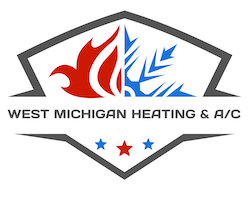
If you’re thinking about air conditioner installation in Hudsonville, you should also be looking at your new air conditioner’s SEER rating.
SEER is short for Seasonal Energy Efficiency Rating. In short, it looks at how capable your air conditioner is at transforming electricity into cold air. A high number means your air conditioner is more efficient, which is excellent for your energy expenses.
However, there are lots of varying models out there for air conditioners. And a better SEER rating typically involves a more expensive price. So, how do you know which one is ideal for your residence?
At West Michigan Heating & Air Conditioning Services, we give you a free, no-pressure home comfort analysis. You can get one by contacting us at (616) 319-1436. Our skilled air conditioner installers will collaborate with you to help you find the right air conditioner for your budget. Plus, they’ll also provide you with a free, no-obligation estimate.
For the time being, let’s go over SEER ratings and how they can influence your family’s comfort. And your electric bills.
What Does the SEER Rating Really Matter?
In 2016, the federal government developed new SEER guidelines. New air conditioners are required to be at baseline 13 SEER in the northernmost United States and 14 SEER in the southeast and southwest. If you’re unsure when you had your air conditioner put in or what its SEER rating is, you can locate the sticker on the system outside your residence. If you can’t find the sticker, you can reach us at (616) 319-1436 for assistance.
If your air conditioner was installed before that year, it’s probably much less efficient. Air conditioner technology has quickly changed in the past several years, with big progress in energy efficiency and smart home capability. Using your new air conditioner with a smart thermostat could help you spend less on utility costs, as the thermostat can automatically adjust your temperature settings when you’re away.
If your present air conditioner has a SEER rating between 8 and 10, adding a 14-SEER system could save you around 30–50% on annual air conditioning costs. Your savings are contingent upon your air conditioner size and your temp settings.
Is the highest SEER Rating the Best?
An air conditioner with a greater SEER rating will be more efficient at consuming electricity for cooling. The best efficient models, which can go as great as 26 SEER, carry ENERGY STAR® designation. This designation shows the air conditioner meets EPA guidelines for energy savings and environmental conservation.
While ENERGY STAR air conditioners are frequently more expensive, you’ll generally get the difference back over time through reduced air conditioning bills. These air conditioners, which are frequently rated 16 SEER and better, need about 8% less power than other new units, according to ENERGY STAR.
One of the largest differences between a 14 SEER and 16 SEER is variable-speed technology. A variable-speed air conditioner can cool at a number of speeds. This fine-tunes comfort for your family while keeping your utility costs down. It can also keep temperatures and humidity more even, since it can work for longer without requiring a lot more power.
When installing a variable-speed air conditioner, you’ll have to ensure that your furnace or air handler is compatible. This is because your air conditioner uses this unit’s blower to disperse chilled air around your home. Furnaces only work for around 20 years, so if yours is around that mark, we recommend furnace installation at the same time so you can receive all the advantages of your variable-speed air conditioner.
When you’re ready to replace your air conditioner, the cooling professionals at West Michigan Heating & Air Conditioning Services are available to help. Reach us at (616) 319-1436 to set your free home comfort analysis now.


